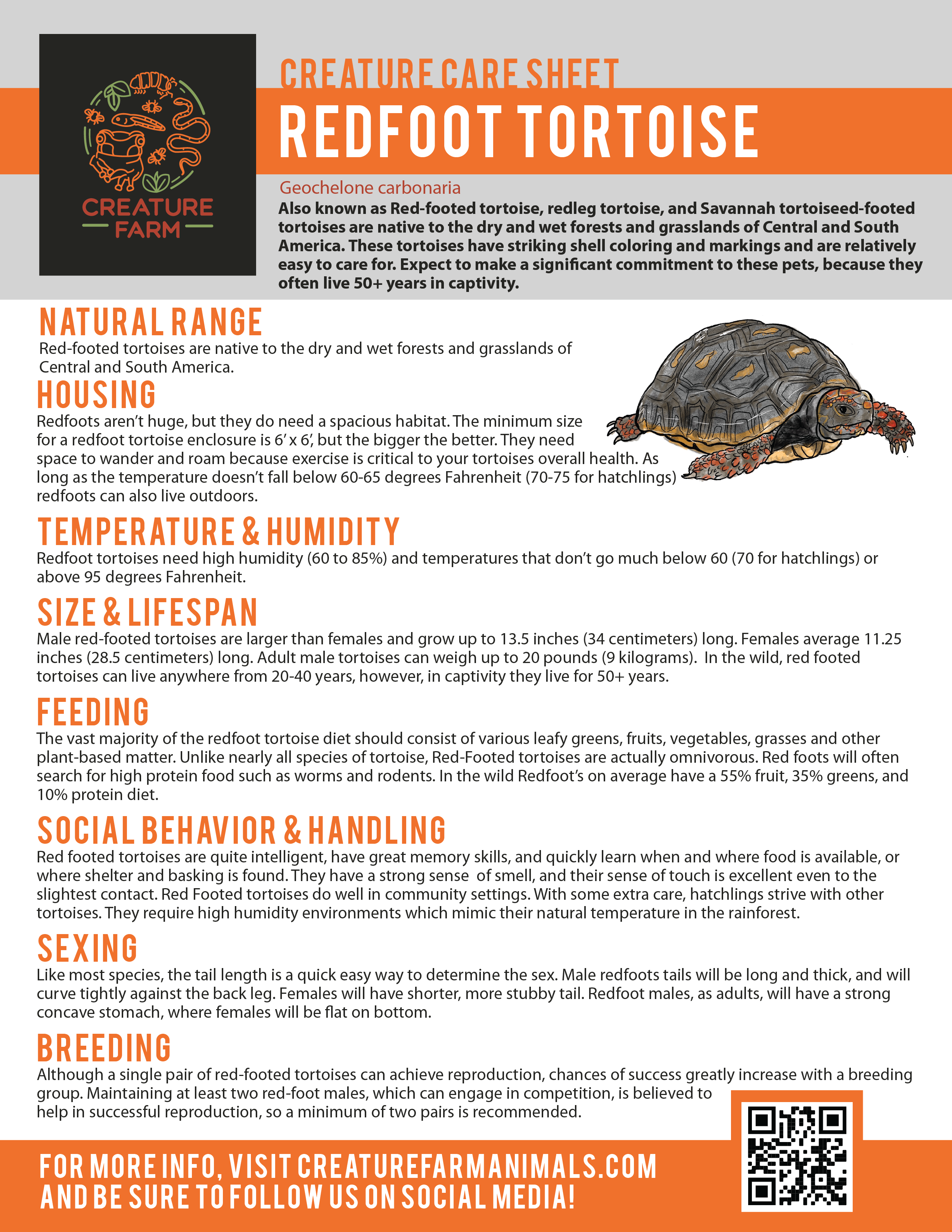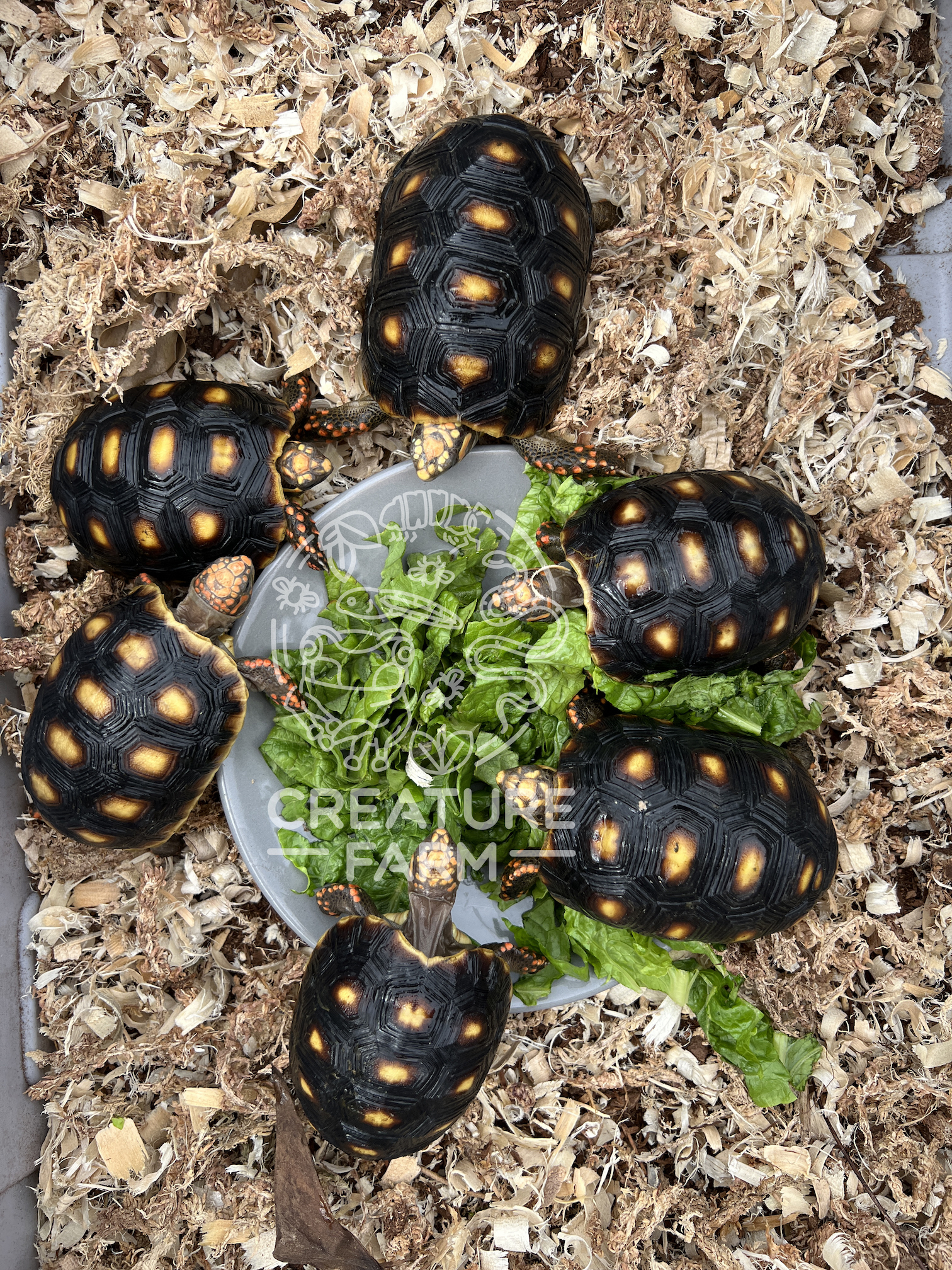CARE GUIDE
Geochelone carbonaria
Also known as Red-footed tortoise, redleg tortoise, and Savannah tortoiseed-footed tortoises are native to the dry and wet forests and grasslands of Central and South America. These tortoises have striking shell coloring and markings and are relatively easy to care for. Expect to make a significant commitment to these pets, because they often live 50+ years in captivity.
NATURAL RANGE
Red-footed tortoises are native to the dry and wet forests and grasslands of Central and South America.
HOUSING
Redfoots aren’t huge, but they do need a spacious habitat. The minimum size
for a redfoot tortoise enclosure is 6’ x 6’, but the bigger the better. They need
space to wander and roam because exercise is critical to your tortoises overall health. As long as the temperature doesn’t fall below 60-65 degrees Fahrenheit (70-75 for hatchlings) redfoots can also live outdoors.
TEMPERATURE & HUMIDITY
Redfoot tortoises need high humidity (60 to 85%) and temperatures that don’t go much below 60 (70 for hatchlings) or above 95 degrees Fahrenheit.
SIZE & LIFESPAN
Male red-footed tortoises are larger than females and grow up to 13.5 inches (34 centimeters) long. Females average 11.25 inches (28.5 centimeters) long. Adult male tortoises can weigh up to 20 pounds (9 kilograms). In the wild, red footed tortoises can live anywhere from 20-40 years, however, in captivity they live for 50+ years.
FEEDING
The vast majority of the redfoot tortoise diet should consist of various leafy greens, fruits, vegetables, grasses and other plant-based matter. Unlike nearly all species of tortoise, Red-Footed tortoises are actually omnivorous. Red foots will often search for high protein food such as worms and rodents. In the wild Redfoot’s on average have a 55% fruit, 35% greens, and 10% protein diet.
SOCIAL BEHAVIOR
Red footed tortoises are quite intelligent, have great memory skills, and quickly learn when and where food is available, or where shelter and basking is found. They have a strong sense of smell, and their sense of touch is excellent even to the slightest contact. Red Footed tortoises do well in community settings. With some extra care, hatchlings strive with other tortoises. They require high humidity environments which mimic their natural temperature in the rainforest.
SEXING
Like most species, the tail length is a quick easy way to determine the sex. Male redfoots tails will be long and thick, and will curve tightly against the back leg. Females will have shorter, more stubby tail. Redfoot males, as adults, will have a strong concave stomach, where females will be flat on bottom.
BREEDING
Although a single pair of red-footed tortoises can achieve reproduction, chances of success greatly increase with a breeding group. Maintaining at least two red-foot males, which can engage in competition, is believed to help in successful reproduction, so a minimum of two pairs is recommended.



